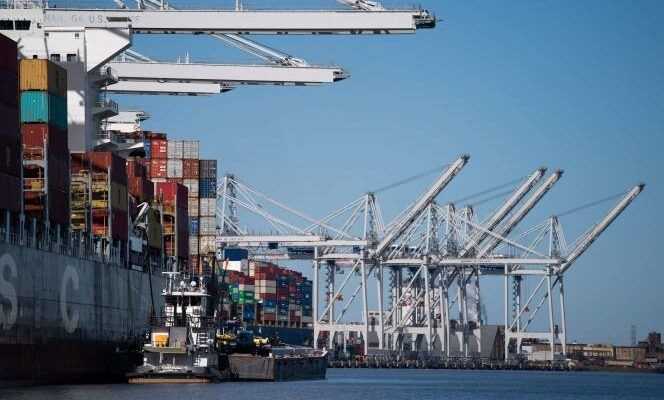Maritime transport, which sits on the crest line of globalization, offers one of the best perspectives on the transformation of the planet’s economy. However, at the time of Covid-19, the report on maritime transport published Thursday, November 18 by the United Nations Conference on Trade and Development (Unctad), confirms that globalization is changing its face.
The relative good health of maritime transport in 2020 shows that the Covid-19 crisis has above all been devastating for services, much more than for industry. Even though the volume of maritime transport fell by 3.8% in 2020, it held up better than expected. Its share in world GDP has also increased during this year, thanks to a demand that has shifted, due to lockdowns, from services such as restaurants and tourism to consumer goods.
Despite the paralysis of many ports in 2020, bulk transport, particularly grain, coal and iron ore, increased by 1.3%, followed by containers (–1.5%) and hydrocarbons (–7% ). The volume is expected to rebound by 4.3% in 2021. The Covid-19 crisis has not affected the essential role of Asia, which alone accounts for 41% of port loads in the world, and even two-thirds if we only take into account that of the containers. The five economies best connected to the rest of the world by maritime transport – China, Hong Kong, Malaysia, South Korea and Singapore – are in Asia.
Transition to hybrid globalization
The shortage of containers combined with port congestion and strong demand has increased the price of freight on certain maritime routes tenfold. According to UNCTAD, these tariffs will probably remain high at “Short and medium and term”, which could have lasting consequences on trade and supply chains around the world, but also on prices.
According to UNCTAD estimates, freight rates – more than 10,000 dollars (8,830 euros) per container in September 2021 on the spot market (where prices are set on a daily basis), according to specialist Drewry, five times more than at the beginning of 2020 – if they remain at the same level, should alone lead to an increase in import prices in the world by 11% and consumer prices by 1.5%. The developing island economies, which are very dependent on maritime transport, will be the most affected and goods with low added value, often produced in poor countries, will be the most affected, such as textiles and rubber. For example, pepper exporters in Vietnam have lost significant market shares in the United States to Brazil, due to their remoteness. “Escalating transport costs, if continued, will not only affect exports and imports, as well as production and consumer prices, but also the prospects for economic recovery in the short and medium term,” is worried about the organization based in Geneva.
You have 23.03% of this article to read. The rest is for subscribers only.
